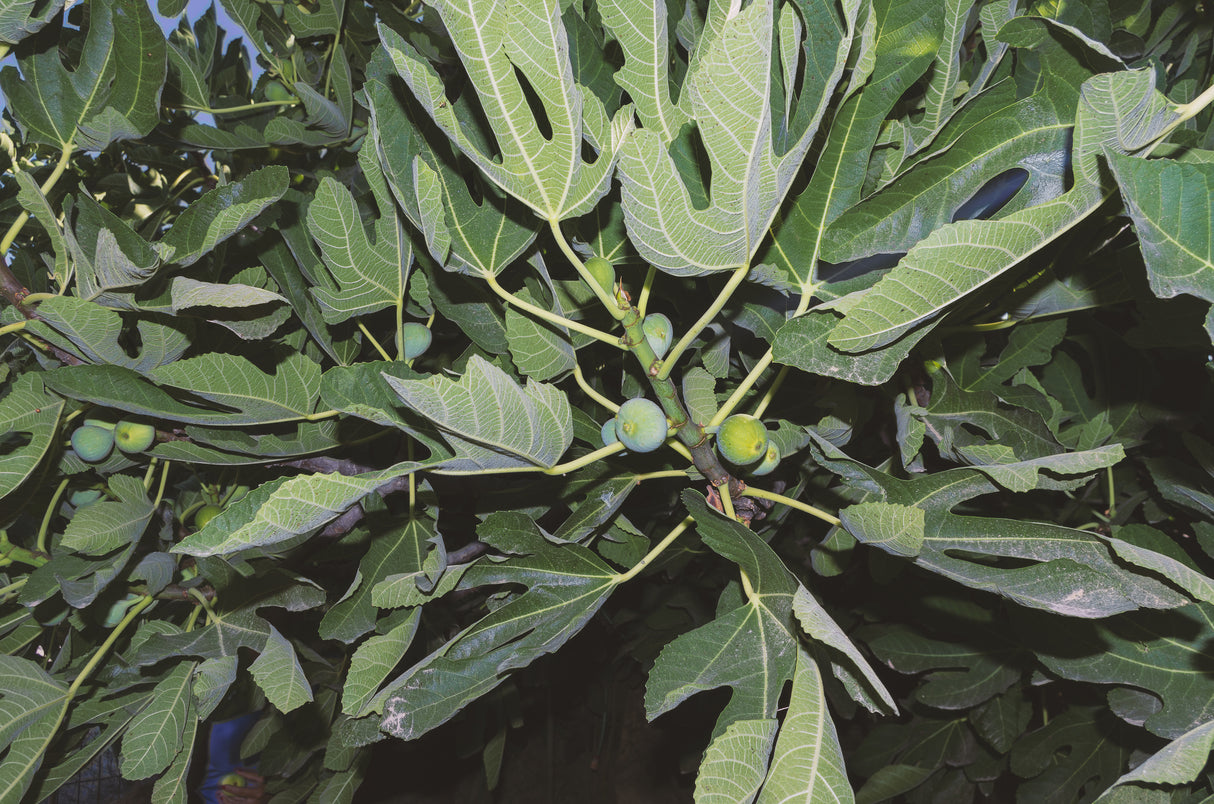Ficus microcarpa hillii ‘Flash’
The Ficus microcarpa hillii ‘Flash’, commonly known as Flash Fig, is a fast-growing evergreen tree or shrub admired for its dense, glossy green foliage with contrasting lighter new growth. Growing up to 10–15 meters tall (smaller with regular pruning), it’s ideal for hedging, screening, topiary, or as a feature tree in gardens and streetscapes. Its tidy growth habit and adaptability make it a favorite for formal and contemporary landscapes.
Hardy and low-maintenance, Flash Fig thrives in a variety of conditions, providing year-round greenery and structure to gardens.
Specifications:
- Height: 10–15 meters (pruned to size if desired)
- Width: 4–8 meters
- Native to: Southeast Asia and Australia
- Foliage: Glossy, dark green leaves with bright green new growth; evergreen
- Growth rate: Fast
Conditions:
- Soil: Prefers well-drained, fertile soils; tolerates sandy, loamy, and clay types
- Light: Full sun to partial shade
- Water: Low to moderate; drought-tolerant once established
- Climate: Thrives in temperate, subtropical, and tropical regions
Additional Features:
- Form: Dense, upright growth habit with a rounded canopy
- Uses: Ideal for hedging, screening, topiary, feature planting, or shade trees
- Spacing: Plant 1–2 meters apart for dense hedges or 4–6 meters for individual trees
- Low Maintenance: Requires minimal pruning; prune to shape or control size
- Pest Resistance: Hardy and generally pest-free
- Drought Tolerance: Performs well in low-water gardens once established
- Air Purifying: Improves air quality in urban environments
- Root System: Non-invasive when properly maintained; suitable for urban and residential plantings
- Versatility: Complements formal, tropical, and contemporary garden styles
- Seasonal Appeal: Evergreen foliage provides year-round greenery
The Flash Fig is a versatile and resilient tree, perfect for creating lush, green hedges, privacy screens, or adding elegance and structure to any landscape.
The Benefits Of Buying An Advanced Tree
The Process Of Transplanting A Mature Tree
Identify the Tree's Root Zone
Identify the Tree's Root Zone
Before you begin, it's essential to identify the root zone or root ball of the tree. This is the area where the majority of the tree's feeder roots are located. It is typically estimated as 1 foot of root ball diameter for each inch of tree trunk diameter.
Prune the Roots
Prune the Roots
Root pruning should occur a few months before the actual move, ideally in the dormant season. This involves cutting a trench around the root zone to encourage the growth of new feeder roots, which will help the tree to establish itself in its new location.
Prepare the Tree
Prepare the Tree
Prior to digging, prune dead or excessive branches from the tree. This reduces the tree's overall mass, making it easier to handle, and decreases water loss post-transplant.
Dig Around the Root Ball
Dig Around the Root Ball
After determining the root ball's size, begin digging around it. Try to retain as much soil around the roots as possible. The depth should ideally get under the root system but be feasible for lifting.
Undercut the Root Ball
Undercut the Root Ball
Once you've dug around the periphery of the root ball, begin undercutting to sever the remaining roots beneath it.
Lift the Tree
Lift the Tree
With the root ball freed, carefully lift the tree out of the hole. For large trees, this will likely require machinery like a tree spade or crane. Always lift the tree by the root ball, not the trunk.
Prepare the Tree for Transport
Prepare the Tree for Transport
Once the tree is out of the ground, it's critical to protect the root ball to prevent damage. Wrap it in burlap and secure it with twine, wire or steel basket. This not only holds the root ball together but also helps retain moisture.
Water the Root Ball
Water the Root Ball
Prior to transportation, water the root ball thoroughly to ensure the roots stay moist.
Transporting the Tree
Transporting the Tree
Load the tree carefully onto a truck or trailer for transport. The tree should be securely positioned to avoid damage during transit. The tree should ideally be planted in its new location as soon as possible to minimize stress and increase its chance of survival.


